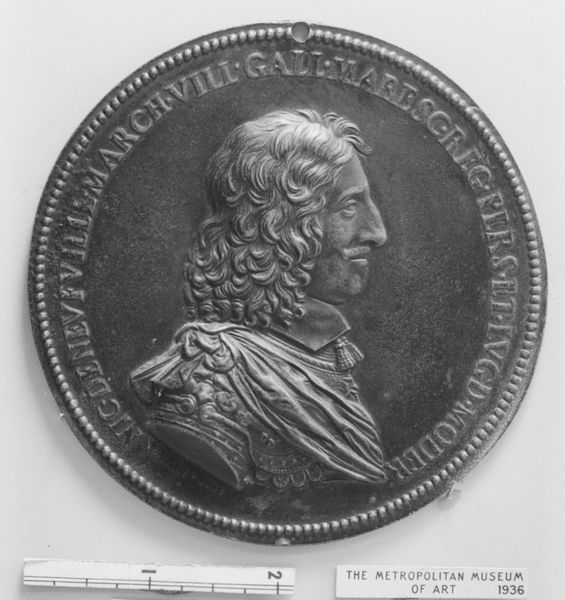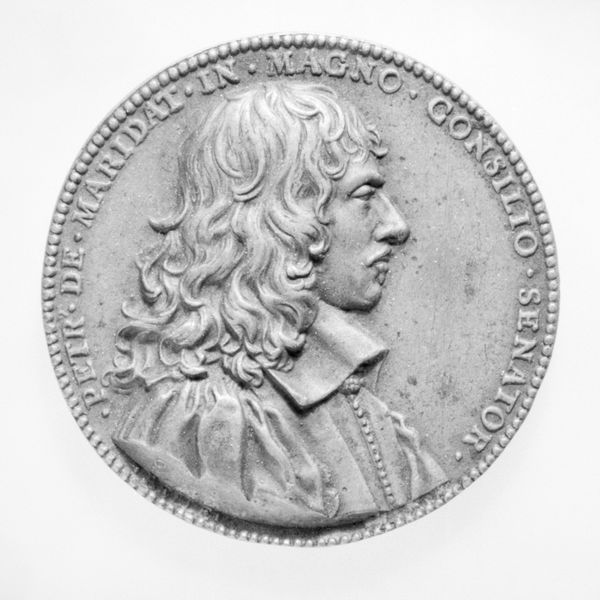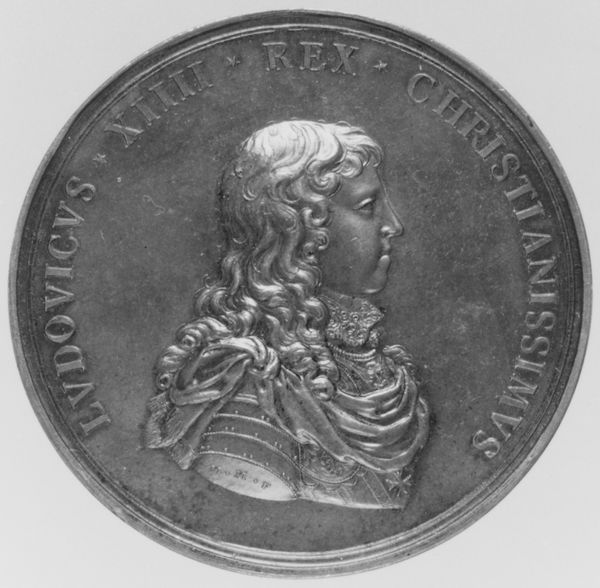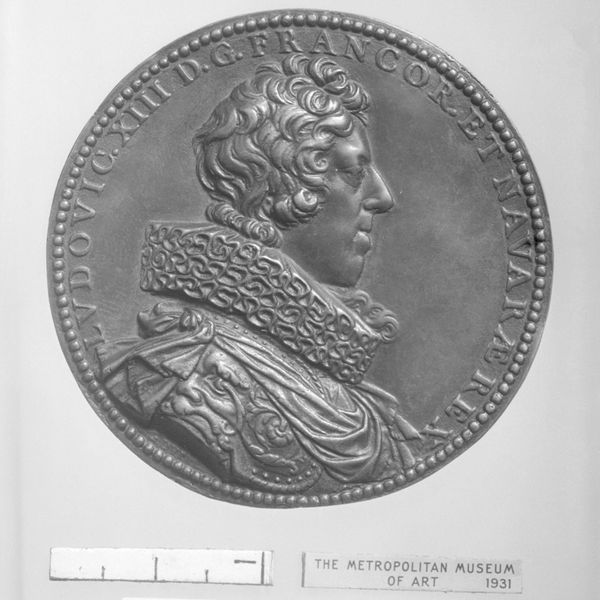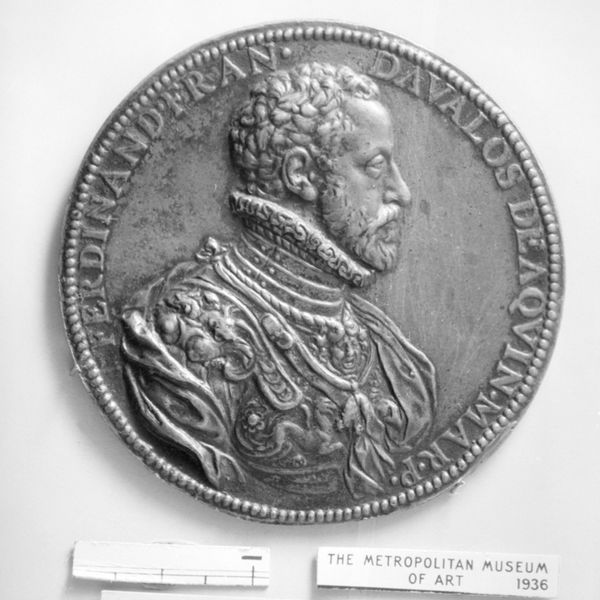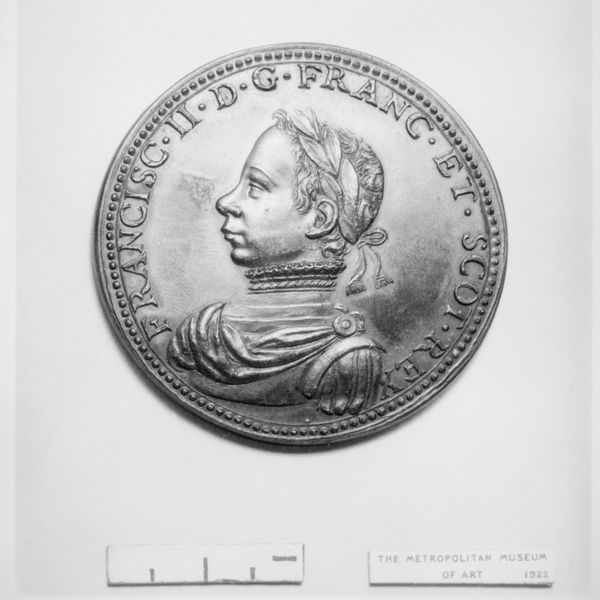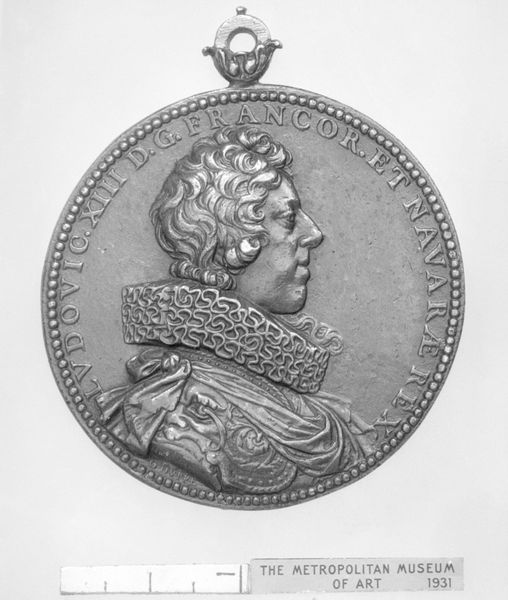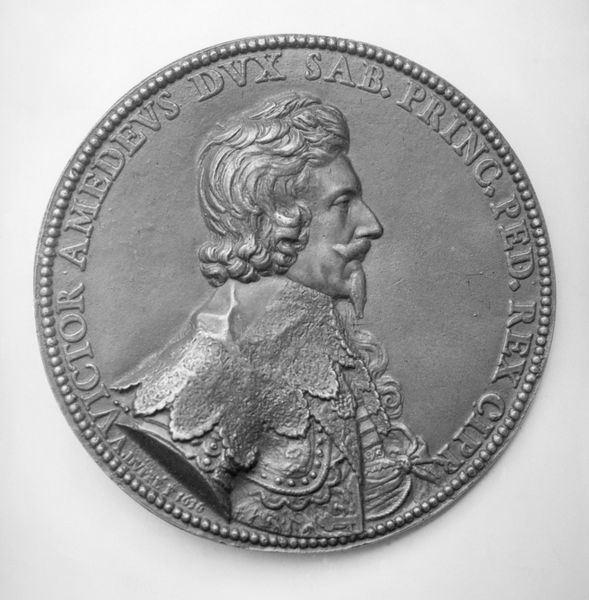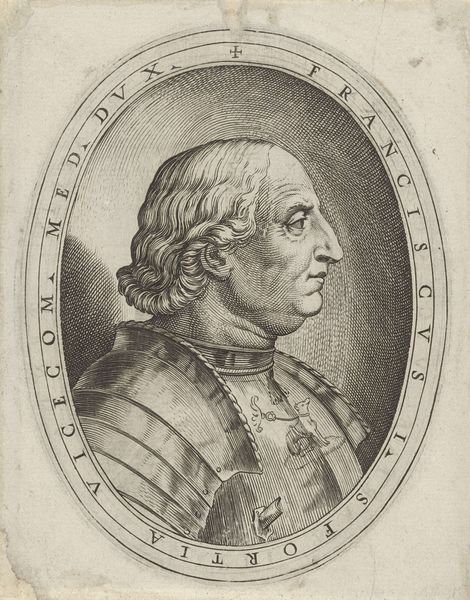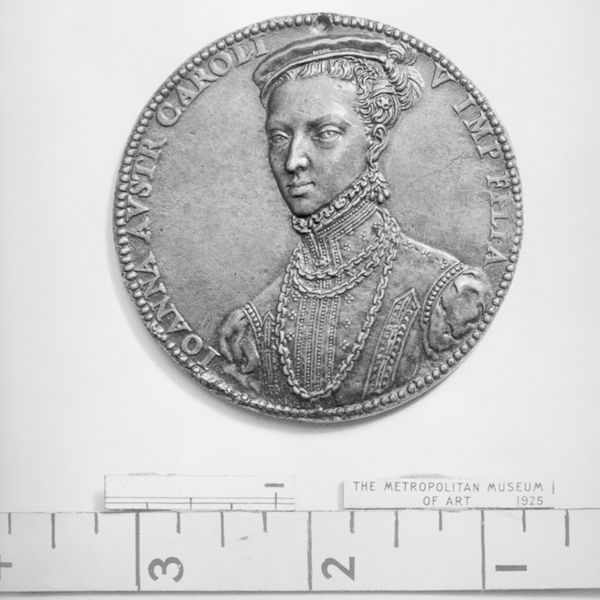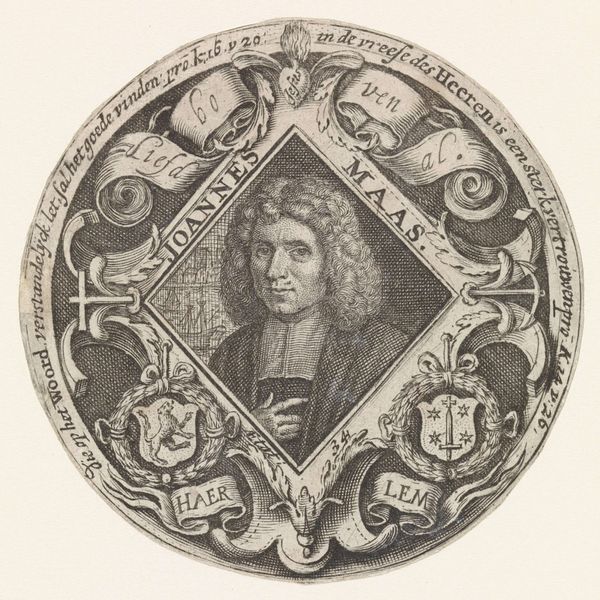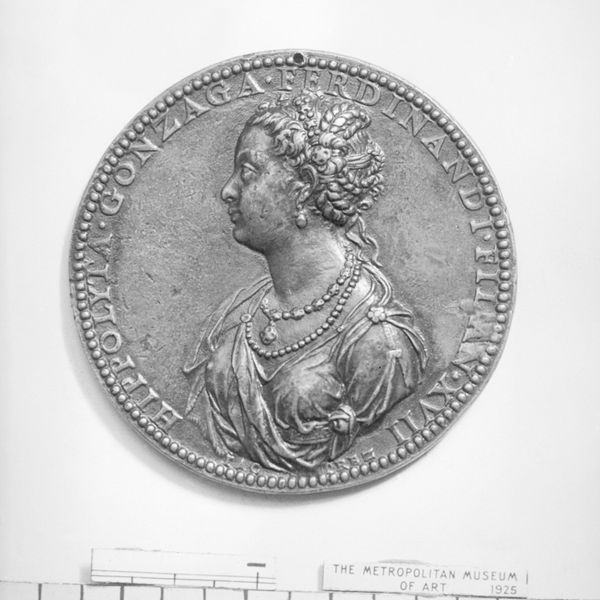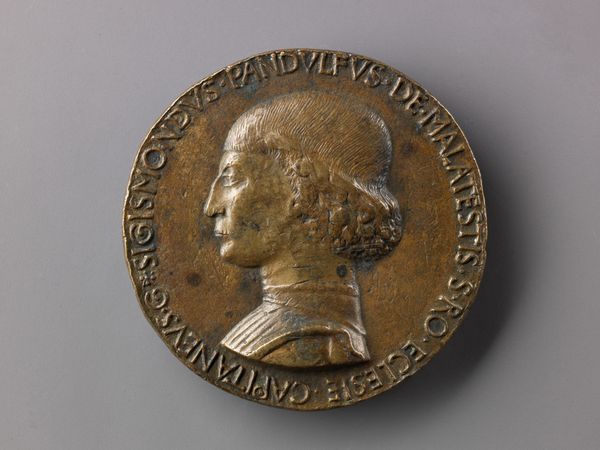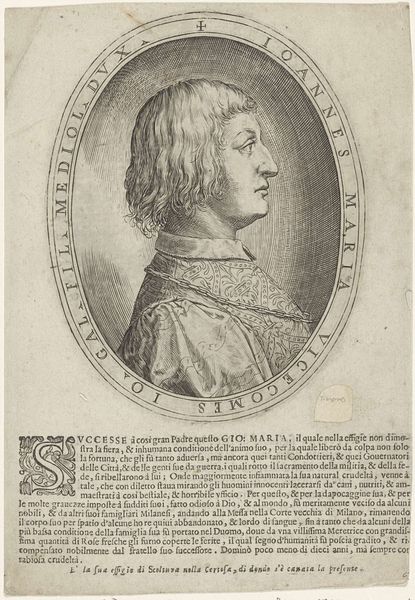
William Ducy, later Third Baronet and Viscount Downe (1615-1679) 1636
0:00
0:00
metal, relief, sculpture
#
portrait
#
medal
#
baroque
#
metal
#
sculpture
#
relief
#
sculpture
#
men
#
decorative-art
#
profile
Dimensions: Diam. 3 1/8 in. (79 mm.)
Copyright: Public Domain
Curator: Look at the intricate details on this portrait medal; it's striking! Editor: There’s an austere beauty in the cool metallic tones and crisp profile; the light catches the textured surface in such an elegant way. Tell me more. Curator: This artwork is entitled "William Ducy, later Third Baronet and Viscount Downe (1615-1679)," made in 1636. It's currently housed at the Metropolitan Museum of Art in New York. These medals were more than just representations, they functioned as status symbols and even as political currency in some contexts. Editor: Absolutely! It presents a formal profile of this nobleman in Baroque fashion, contained within this circular frame like an emblem. The clean lines and precision… It speaks volumes about control, power. Curator: Indeed. Consider also the inscriptions encircling the profile; it suggests inherited status and claims to legitimacy within a stratified society. The subject's sidelong gaze almost conveys a sense of skepticism or even guardedness towards a rapidly changing sociopolitical environment. These depictions were essential to construct and communicate desired narratives. Editor: It’s like peering into a codified visual language from a different era! The material itself -- most likely silver, based on its reflectivity -- contributes to that reading. The metallic sheen almost creates a sense of cool remove. It almost gives a read of ‘unbothered.’ Curator: Don't forget that portraits like this functioned as objects of exchange, solidifying social networks. And of course it does represent Ducy as part of a specific history, family, and set of social relations, making him tangible and ever-present to contemporaries. Editor: A great example of this complex intermingling of personal identity, skillful design, and social standing— all within this simple yet powerful art form. It speaks to something essential about being seen, both then and now. Curator: Very well, perhaps we should conclude here? The analysis certainly gave me food for thought regarding portraiture's function beyond simple physical likeness.
Comments
No comments
Be the first to comment and join the conversation on the ultimate creative platform.
